The Blue bird is an iconic symbol of the southern California landscape. These small, vibrant birds can be seen flitting around gardens and parks, bringing their cheerful song and good luck to all who see them.
Found throughout the region, these birds are a delight to watch and can often be seen gathering in large flocks. They are the perfect addition to any backyard, and their presence is sure to bring joy to your outdoor space.
With their striking blue plumage, these birds are a beautiful reminder of the natural beauty of southern California.
1. Western Bluebird
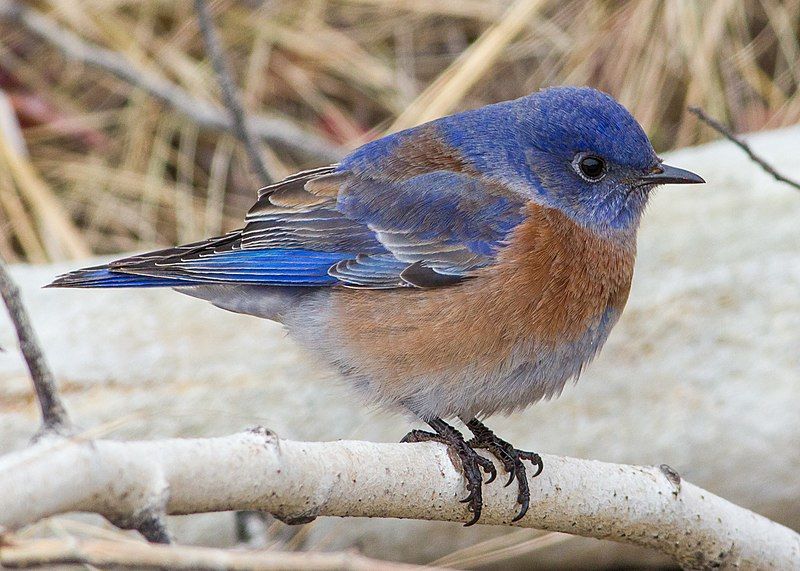
The western bluebird is a small, colorful songbird that can be found throughout the western United States. It is a member of the thrush family, which includes other birds such as robins, solitaires, and the American robin.
The western bluebird is about seven to nine inches long, with a stout beak and brownish-gray plumage. The male has a bright blue head and back, and a reddish-orange chest, while the female is duller in color.
Its diet consists of insects, fruits, and berries. The western bluebird is a social bird, often found in small groups, and is a popular sight in backyards and parks. It builds nests in tree cavities or man-made nesting boxes.
The female will lay between four and six eggs, and both parents share the responsibility of incubating and caring for the young.
The western bluebird is a common sight in the western United States and is listed as a species of least concern on the IUCN Red List of Threatened Species.
| Kingdom | Animalia |
| Phylum | Chordata |
| Class | Aves |
| Order | Passeriformes |
| Family | Turdidae |
| Genus | Sialia |
| Species | S. mexicana |
2. California Scrub Jay
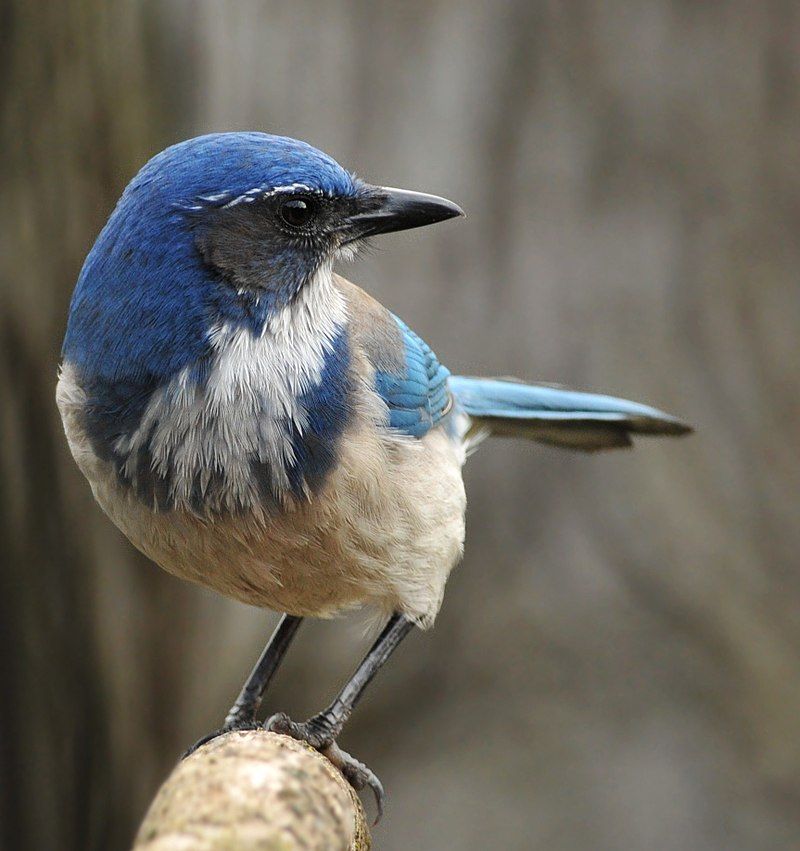
The California scrub jay is a type of bird that is native to western North America. This species of jay can be found in regions stretching from southern British Columbia to California and western Nevada near Reno, as well as to the west of the Sierra Nevada mountain range.
It is a medium-sized bird with a wingspan of 12 inches and a length of 8 inches. It has a blue-gray head, nape, and wings with a white chest and belly. The California scrub jay is an omnivore, feeding on a variety of food sources such as insects, eggs, nuts, and berries.
It is a highly social species and is often seen in small groups foraging in open woodlands and shrublands. The California scrub jay plays an important role in the ecosystem by aiding in the dispersal of seeds and providing food for other animals such as hawks, owls, and foxes.
This species is considered a species of least concern by the International Union for Conservation of Nature, indicating that its population is stable and not threatened by extinction.
| Kingdom | Animalia |
| Phylum | Chordata |
| Class | Aves |
| Order | Passeriformes |
| Family | Corvidae |
| Genus | Aphelocoma |
| Species | A. californica |
3. Purple Martin
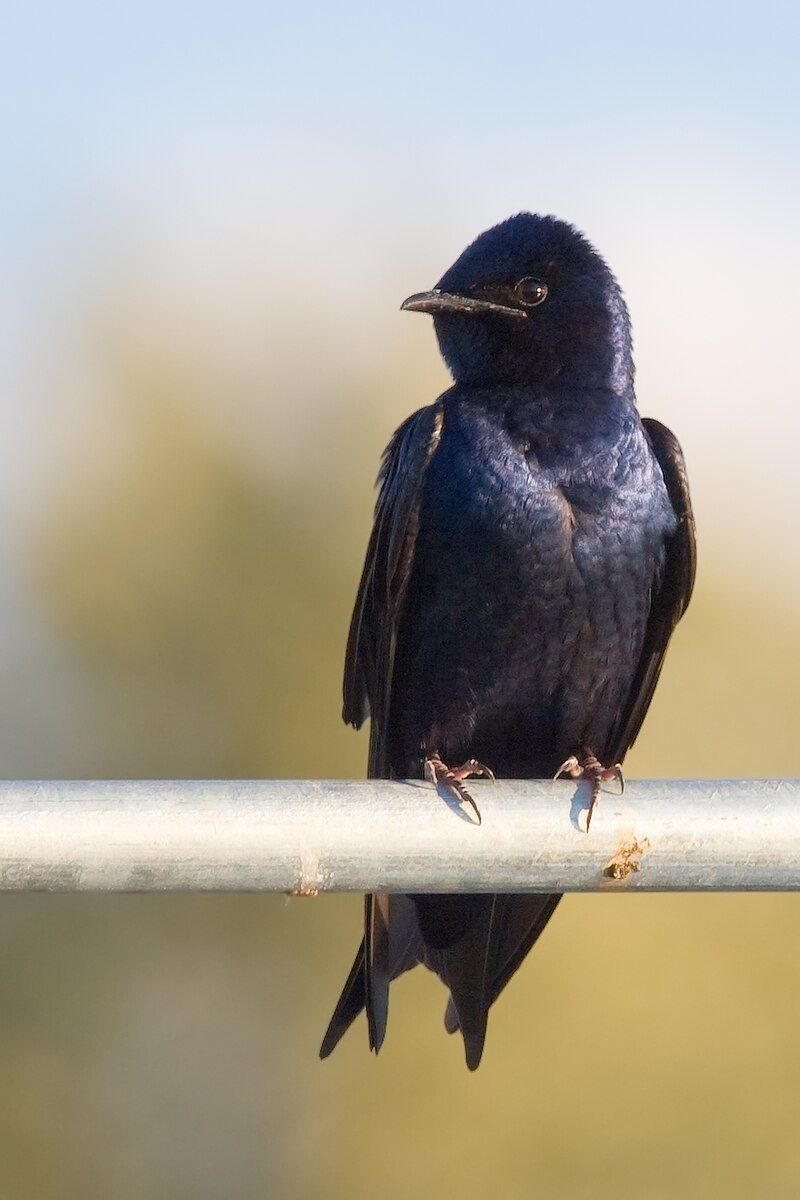
The purple martin is a species of bird belonging to the Hirundinidae family, which also includes other swallows. It is the largest of the North American swallows, measuring up to 7.5 inches in length.
While its name may suggest that it has purple plumage, this is actually not the case. The purple martin is instead a mixture of blues, grays, and whites, which can appear purple in certain lights. Its wings are a deep, glossy blue, while its chest is a lighter grayish-blue.
Its head is white with a black cap, and its wings and tail are a pale gray. The most striking feature of the purple martin is its bright white rump and tail.
This species of bird is native to the United States and is found in many parts of the country, although its numbers are declining in some areas. It is known to inhabit open woodlands, wetlands, and suburban areas, and it is sometimes found in large numbers near bodies of water.
The purple martin is an insectivore, eating mostly flying insects, such as moths, dragonflies, and beetles. It is also known to feed on small fruits and berries.
| Kingdom | Animalia |
| Phylum | Chordata |
| Class | Aves |
| Order | Passeriformes |
| Family | Hirundinidae |
| Genus | Progne |
| Species | P. subis |
4. American Robin
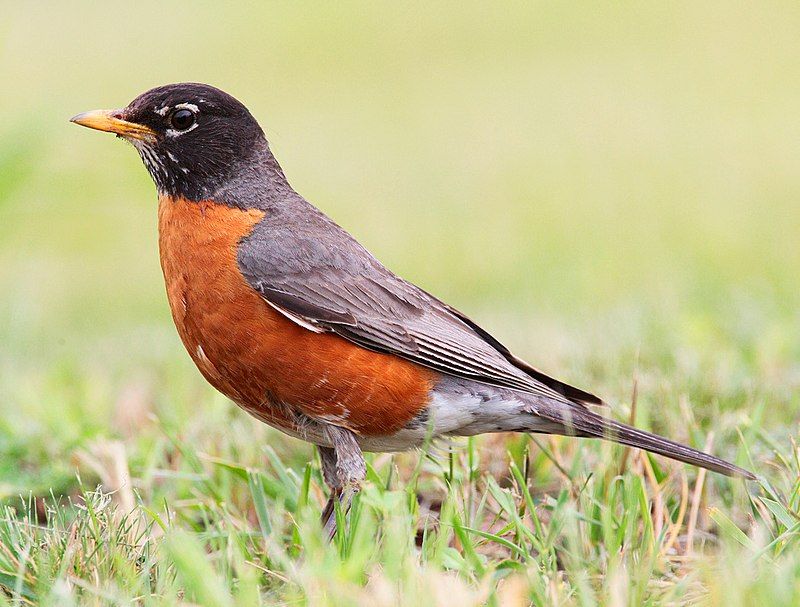
The American robin is a species of migratory bird in the true thrush genus and Turdidae family. It has been named after the European robin, due to its reddish-orange breast, which is the same color as the European robin.
Although these two birds look similar, they are not closely related. The European robin belongs to the Old World flycatcher family, while the American robin is part of the true thrush genus and Turdidae family.
The American robin is a common bird found throughout most of the continental United States and is a familiar garden bird. It is a medium-sized bird with a round body and a long tail. The American robin has an orange-red chest and a gray-brown back, wings, and tail.
It has a white belly and a black head with a white eyering.
The American robin is a sociable bird, often found in flocks and is an omnivore, feeding on both insects and fruits. The American robin migrates southward in the winter months and can be seen in large flocks in the northern states during spring and summer.
They typically return to the same area year after year. The American robin is a popular bird for birdwatchers and can be spotted in parks and gardens across the country.
| Kingdom | Animalia |
| Phylum | Chordata |
| Class | Aves |
| Order | Passeriformes |
| Family | Turdidae |
| Genus | Turdus |
| Species | T. migratorius |
5. American Goldfinch
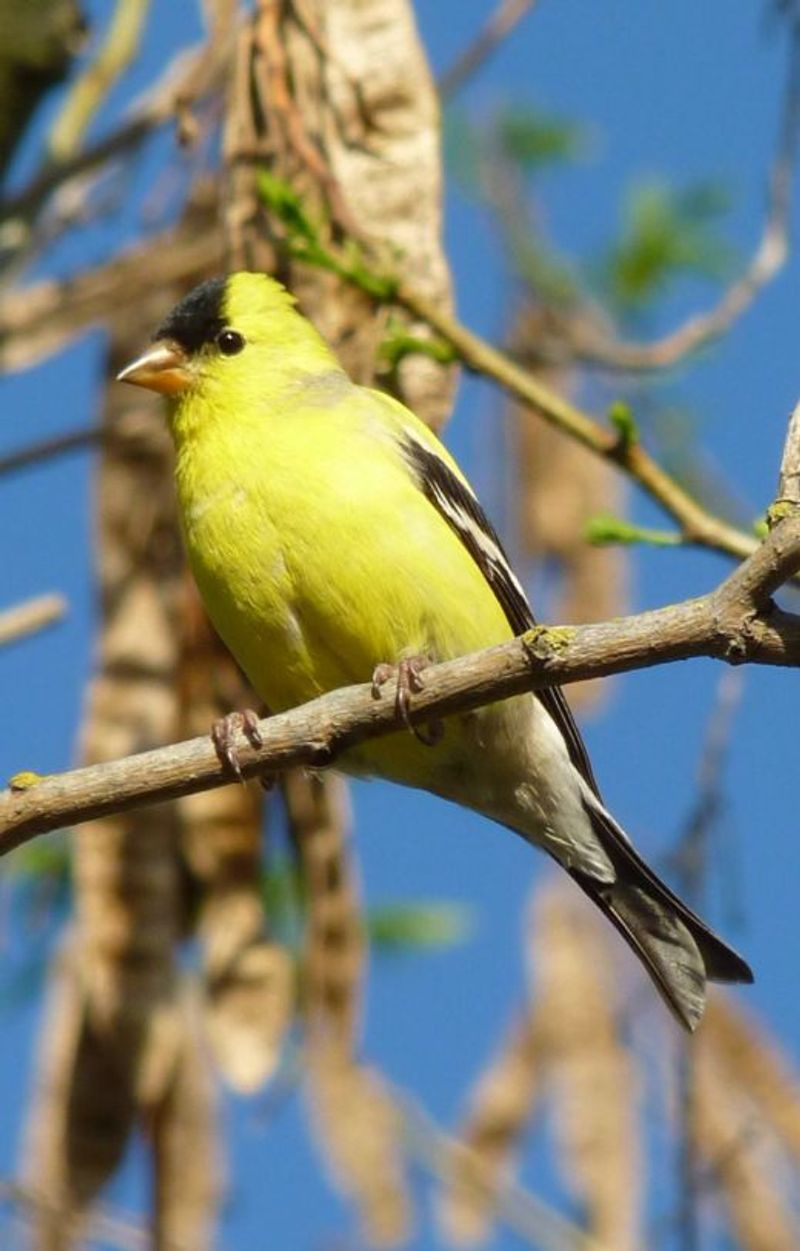
The American goldfinch is a bird that belongs to the finch family and is native to North America. It is a small bird that migrates between mid-Alberta and North Carolina during the breeding season.
During winter, it can be found south of the Canada–United States border all the way down to Mexico. This bird is an important part of the North American ecosystem, providing important food sources for other animals.
It is also an important part of the local culture, with many people enjoying the sight of these birds during the summer months. The American goldfinch is an important part of the local wildlife, and its migratory pattern is essential for its survival.
| Kingdom | Animalia |
| Phylum | Chordata |
| Class | Aves |
| Order | Passeriformes |
| Family | Fringillidae |
| Genus | Spinus |
| Species | S. tristis |
6. Brown Pelican
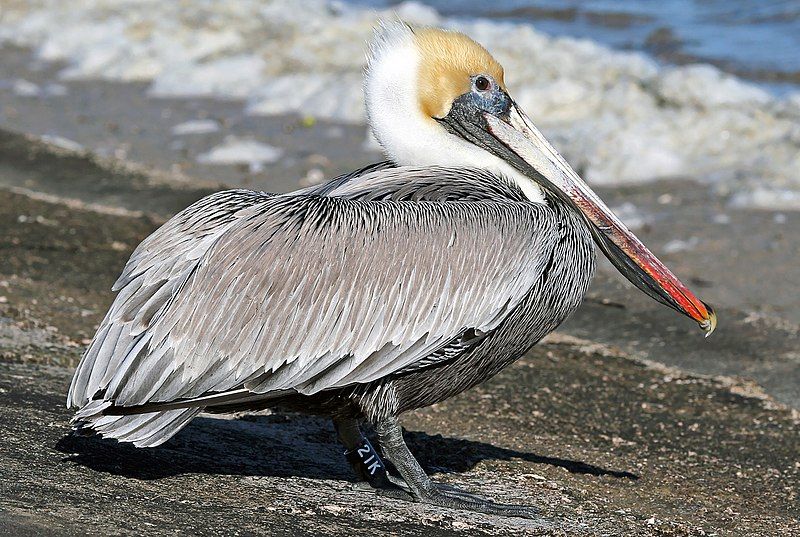
The brown pelican is a bird belonging to the Pelican family, Pelecanidae. This family is one of three species found in the Americas, and it is one of only two species that feed by diving into the water.
The brown pelican is a large bird with a wingspan of up to seven feet and a length of around four feet. Its body is mainly brown, but it has white feathers on its head and neck. Its bill is long and yellow with a distinctive pouch.
The brown pelican is a coastal bird, nesting in large colonies in areas such as barrier islands and mangroves. Its diet consists mainly of fish, which it catches by plunge-diving from heights of up to sixty feet.
It is also known for its cooperative hunting behavior; groups of pelicans will work together to herd and corner their prey. The brown pelican is an iconic species of the Americas and is an important part of the coastal ecosystems where it lives.
| Kingdom | Animalia |
| Phylum | Chordata |
| Class | Aves |
| Order | Pelecaniformes |
| Family | Pelecanidae |
| Genus | Pelecanus |
| Species | P. occidentalis |
7. Tanagers
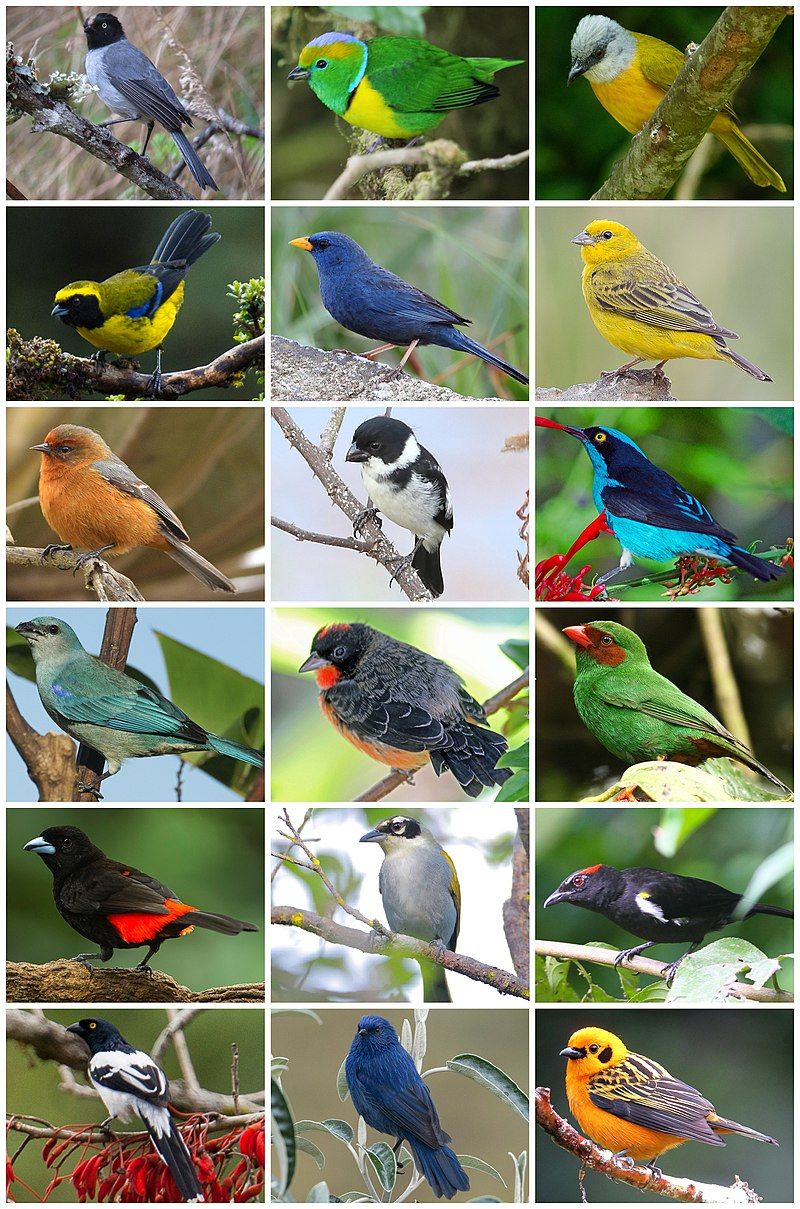
The tanagers are a group of birds belonging to the family Thraupidae, which is part of the larger Passeriformes order. This family of birds is found mainly in the Neotropical region, stretching from Mexico to Argentina, and is the second largest family of birds in the world.
It consists of around 4% of all bird species and 12% of all Neotropical bird species. The Tanagers are a diverse group of birds, with over 400 species in about 50 genera. They range in size from tiny hummingbirds to medium-sized thrushes, with a variety of colors and patterns.
They are mainly found in tropical and subtropical regions, particularly in South America, Central America, and the Caribbean. Most tanagers are small to medium-sized birds, usually between 4 and 8 inches in length, although some species may reach up to 10 inches.
They usually have short, broad bills, and their plumage is brightly colored. Many species have distinctive markings, such as stripes, spots, or bars. The diet of tanagers is mainly composed of fruits and insects, although some species also feed on nectar and small vertebrates.
They typically feed in small flocks, although some species are solitary. They are active during the day, and can often be seen perching on branches or foraging on the ground. Overall, the tanagers are a vibrant and important part of the Neotropical bird family.
They play a significant role in their ecosystems, and their beauty and diversity make them a popular choice for birdwatchers.
| Kingdom | Animalia |
| Phylum | Chordata |
| Class | Aves |
| Order | Passeriformes |
| Family | Thraupidae |
Conclusion
Blue birds are a beautiful and unique addition to Southern California’s avian landscape. They are a beloved sight in many backyards, and their presence is a reminder of the importance of preserving the area’s natural habitat.
Though Blue birds are not as common as other birds, their presence offers a unique glimpse into the diverse wildlife of Southern California.